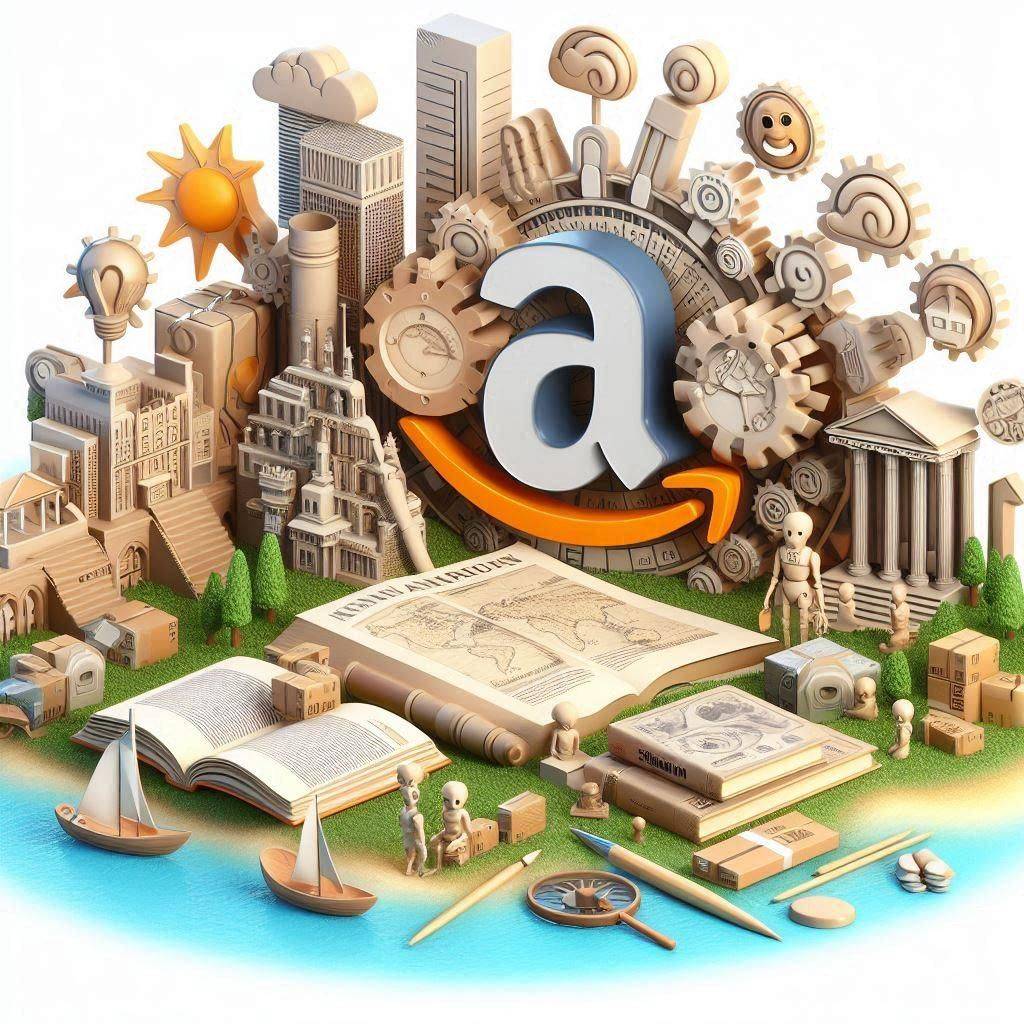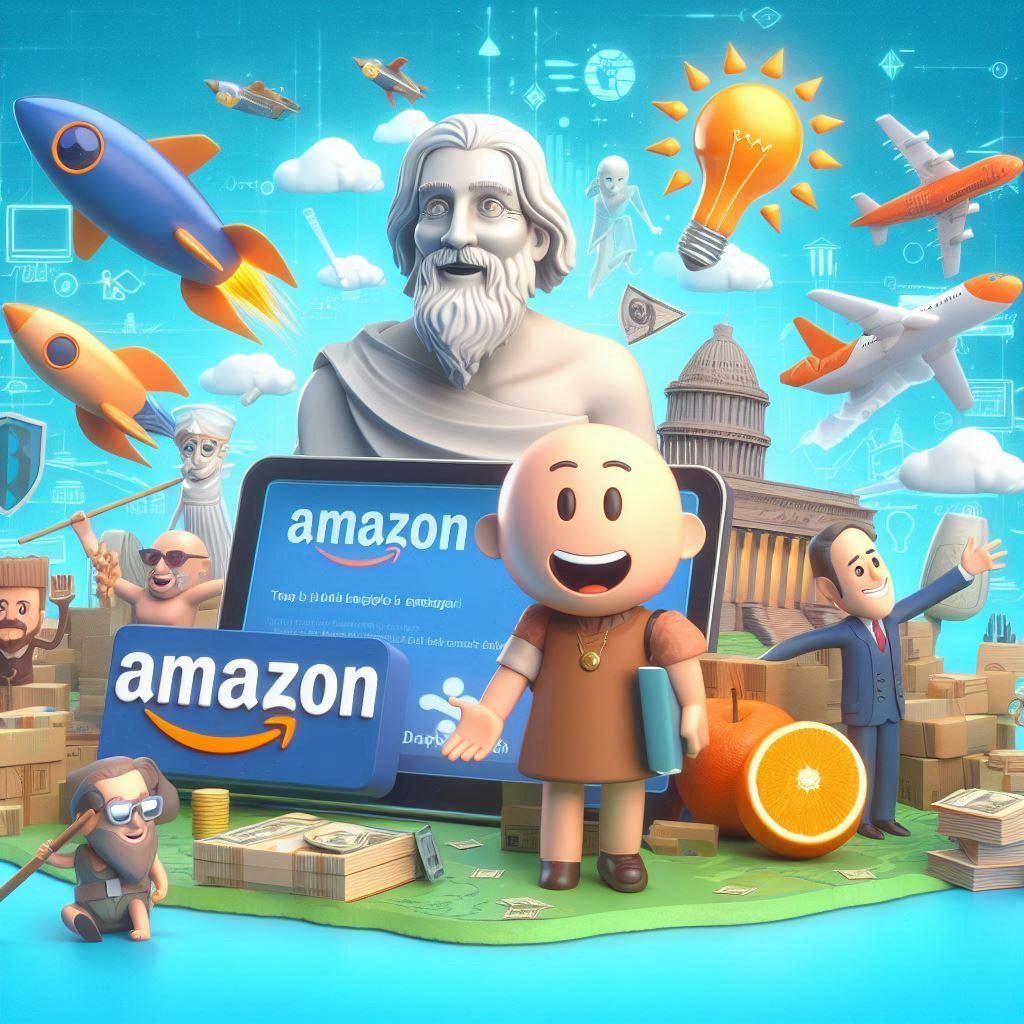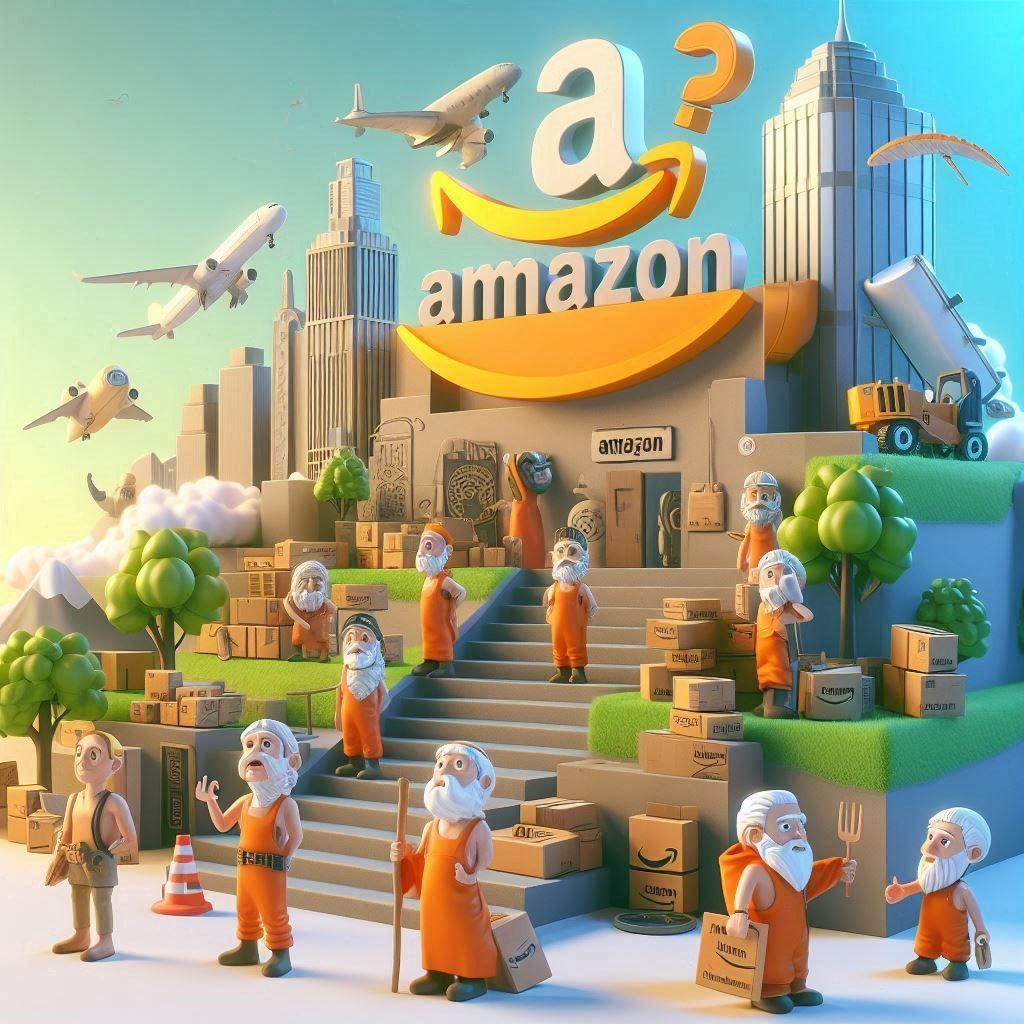Minecraft Walkthrough
Fortnite: Top up and Get 2 Months of Disney+ Service for Bonus
What do you Know About Credit Scores!
The more generous the society is, the longer its members live
With monthly subscription of USD14.99 in Ubisoft, you can enjoy hundreds of 3A games!
Bloons TD 6: A Tower Defense Marvel Crafted by Talented Developers!
Amazon.com, the world’s largest internet retailer, was founded in 1994 by Jeff Bezos as an online book store. It has since expanded into a global technology giant that has revolutionized shopping, reading, and media consumption.
It is unbelievable how fast it rose to become the world’s number one e-commerce firm and also a significant player in multiple industries, from entertainment to cloud computing.
As far as sales are concerned, Amazon is the biggest online retailer globally. Jeff Bezos trusted that going big and fast would lead to success when he began selling books on the internet in 1994.
The company now sells groceries, books, and shipping container houses, among others. They have transformed into a one-stop shop and have numerous future plans.
The following article will delve into Amazon’s interesting history, from its modest beginnings through strategic expansion and acquisitions, which had a ripple effect on the e-commerce industry worldwide.

The foundations of Amazon
Jeff Bezos incorporated Amazon.com in July 1994. The original name of the company was Cadabra, derived from "Abracadabra," but Jeff Bezos had a change of heart since it might be mispronounced and have bad connotations.
Together with his wife at the time, Mackenzie Tuttle, started exploring other domain names like Awake.com, Browse.com, and Bookmall.com. However, it is interesting to note that he also registered Relentless.com, which still redirects to Amazon.com.
Finally, he used a dictionary to settle on "Amazon." Jeff Bezos pictured his online store as being so vast and influential, just like the Amazon River.
As such, Amazon.com was legally registered on November 1, 1994. Initially relying on books due to their convenience in sourcing out materials for sale, it has now become an “everything store."
Bezos has always seen Amazon not only as an online store but also as a tech firm that seeks to make online transactions easy for its clients.
Before Amazon, a Silicon Valley bookstore called Computer Literacy started selling online as early as 1991.
However, what set Amazon.com apart from its competitors was its emphasis on greater convenience. From the outset, the company worked on a system that ensured customer orders were directly delivered to them across the globe.
Amazon expands beyond selling books
After Bezos’ first business plan, Amazon diversified to sell computer games and music in 1998. Simultaneously, it started expanding overseas through acquisitions of online bookstores in the UK and Germany.
By the turn of the century, Amazon had extended its range of products to include consumer electronics, video games, software, home improvement items, toys and games, and others.
In the mid-2000s, Amazon launched Amazon Web Services (AWS), which followed Bezos’ thinking of turning Amazon into a tech company and not just an online retail store.
In 2006, AWS services such as Elastic Compute Cloud (EC2) and Simple Storage Service (S3) were introduced by Amazon, increasing their revenue significantly. These services today are still the backbone of the income earned by AWS.
Amazon expanded further into digital services with the introduction of Kindle e-readers back in 2007, completely changing the e-book industry in the process. By 2012, the Kindle accounted for about half of all Android-based tablet sales.
Bolstered by this success, Amazon Publishing was started in 2011, after which sales of eBooks surpassed those of print books on their site.
Since then, many other initiatives have been undertaken by Amazon, such as the delivery of fresh produce. For instance, it now has drone delivery programs and its own airport, among other operational expansions.

The rise of Amazon
When Bezos established the company, he was mocked and discredited by his peers and those in finance, who doubted the company’s business model.
They thought that it would bring Amazon to its knees because they expected traditional bookstores to outlive it. It took until late 2001 for Amazon.com to turn a profit, which served to increase skepticism even more.
Nevertheless, Bezos did not waver on this point but argued for fast expansion, aiming to capture most of the online retail market.
By December 1996, Amazon boasted 180,000 customers, growing to a million by October 1997, and revenues increasing from $16 million in '96 to $148 million in ‘97.
To support its growth strategy, Amazon went public on NASDAQ in 1997 and raised $54 million. This helped them fuel aggressive expansion efforts through acquisitions. By 1998, however, amid a booming dot-com economy, revenues had leaped to $600 million overnight.
Bezos had become a celebrity entrepreneur, earning him Time magazine's Person of the Year for 1999.
Amazon also launched its affiliate program as an important move towards expanding its customer base via partners. Starting with one associate in 1996, the program expanded to over 350,000 affiliates by 1999, proving highly profitable for the company.

Amazon’s continued expansion
Amazon was first famous for its unprecedented convenience at its inception. No more would people go to bookshops to buy books as they could just search, choose, and purchase from home with delivery within days—a notion that was unheard of in those times.
As Amazon expanded its product listings, it grew even more attractive. However, apart from a variety of goods, the company’s triumph derived from remarkable service that generated customer loyalty, leading to substantial future profits.
Amazon innovated with features like personalized recommendations based on previous purchases, enhancing revenue streams.
Introducing customer reviews further built a community atmosphere, enhancing the attractiveness of Amazon's platform and products to potential new customers.
In recent years, Amazon has achieved remarkable milestones, such as briefly holding the distinction of being the second company ever to reach a $1 trillion market cap (after Apple).
Despite facing challenges like the canceled plans for its second headquarters in New York, Amazon experienced unprecedented growth in 2020, reaffirming its position as a powerhouse in global commerce.
As Amazon pushes through with its mission to expand into new markets and industries, experts predict that its impact on the global economy and society will only continue to grow in the near future.